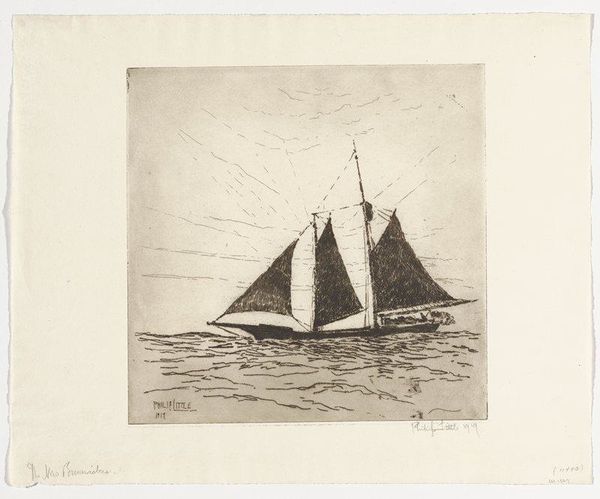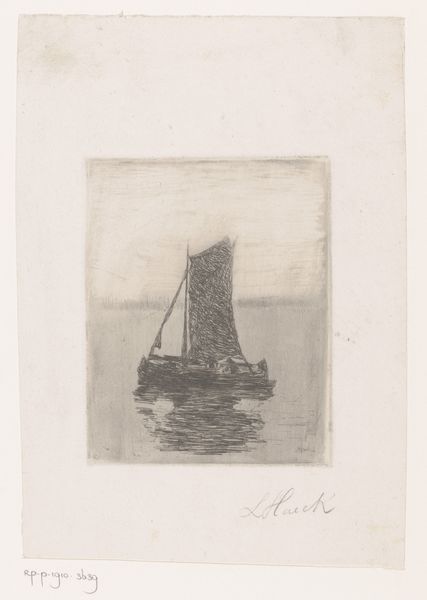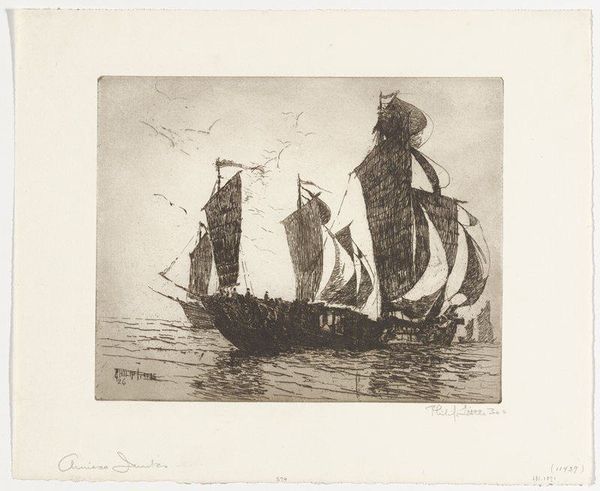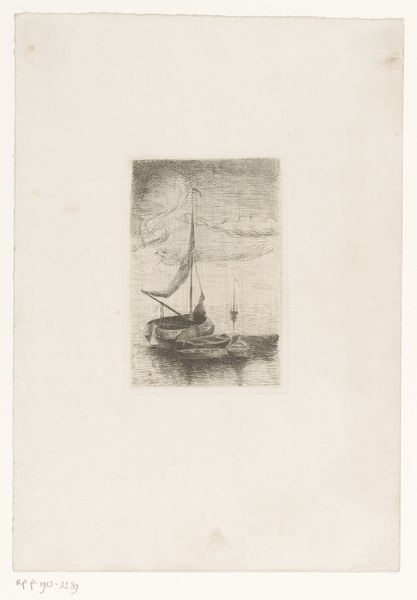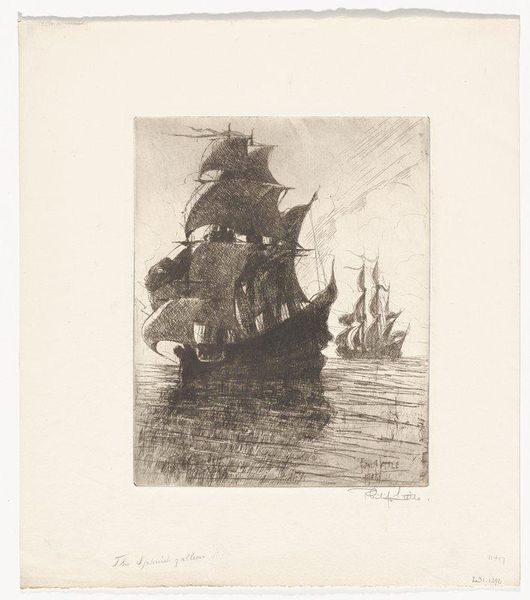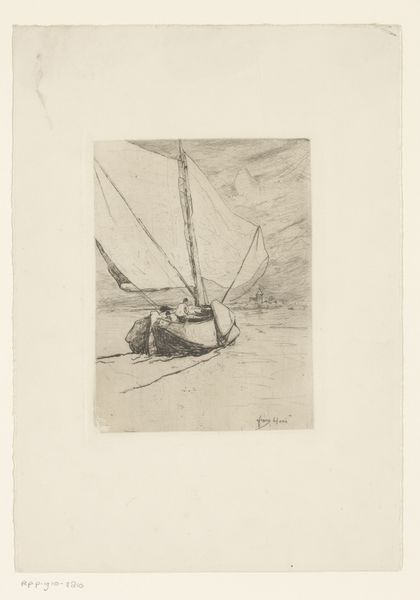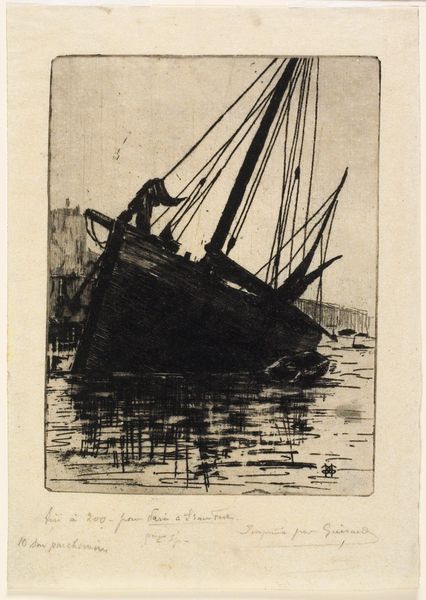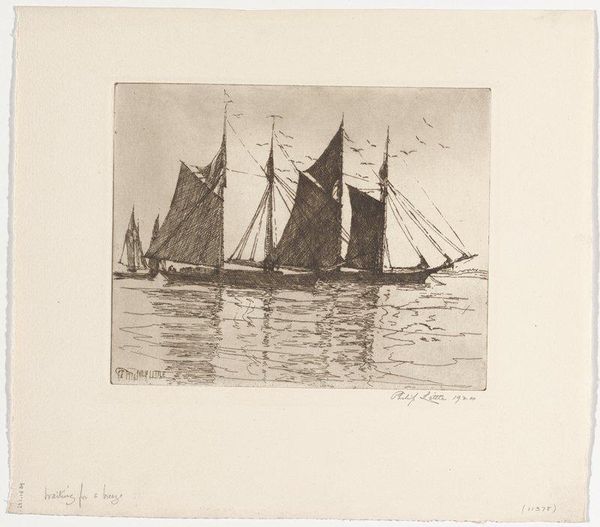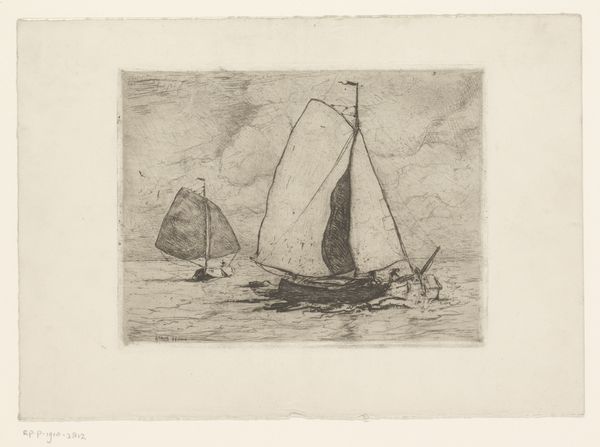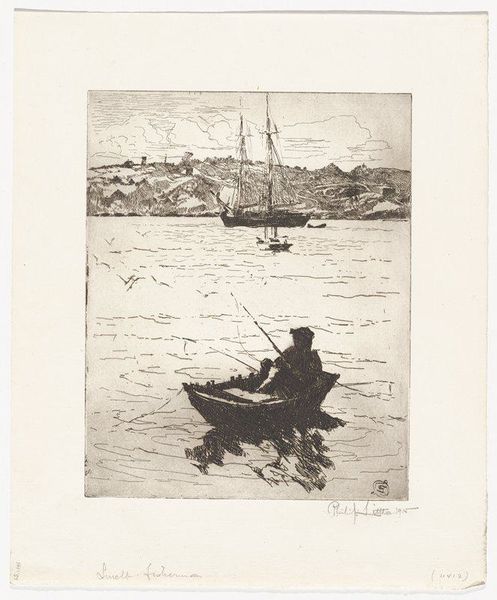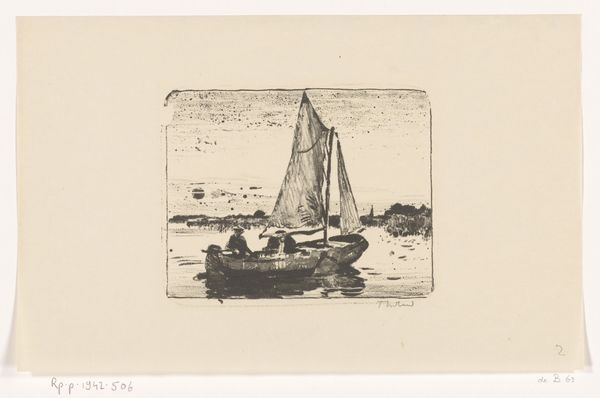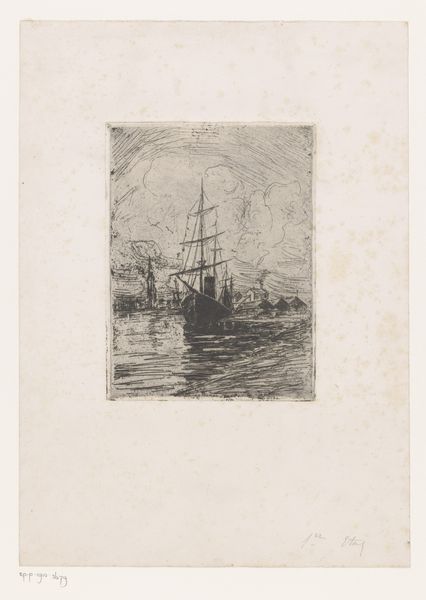
print, etching
# print
#
etching
#
landscape
#
united-states
#
realism
Dimensions: 6 15/16 x 4 15/16 in. (17.62 x 12.54 cm) (plate)10 11/16 x 9 1/16 in. (27.15 x 23.02 cm) (sheet)
Copyright: No Copyright - United States
Curator: This etching from 1916, "Bound Out" by Philip Little, really speaks to the anxieties and ambitions of its era. What strikes you most about it? Editor: Well, it’s deceptively simple – just a boat on the water. But the textures in the etching, the reflections... there's something almost melancholic about it. It feels very isolated, somehow. How do you interpret this work? Curator: The isolation is key. The image places emphasis on industrial development. We must look at the socio-political context and reflect on class, gender, and labor during this historical moment in the United States, specifically with this representation of a lone ship. How did labor affect communities dependent on the ocean's resources? What was the artist’s social class, and how did it affect his art? The scene might look serene, but is that truly what’s happening? Editor: That’s a really interesting point. I hadn’t really thought about it in terms of the labor movement, but seeing it as an artifact of a very specific historical moment does shift things. What is Philip Little trying to say? Curator: Perhaps Little is showing us a transition period; the lone ship going to face larger global issues. We must ask who and what benefits, and what social effects do you think are happening? Do you find a similar story that still occurs in our time? Editor: It almost feels like a statement about resilience. Despite that isolation, that single boat is heading out, moving forward. It resonates. I will never be able to unsee labor and other contexts! Curator: Exactly! This way we may look deeper, as each new question reframes an artwork beyond merely aesthetic appeal into reflections of society itself.
Comments
No comments
Be the first to comment and join the conversation on the ultimate creative platform.

